The ubiquitous tabby cat often gets confused with a breed of cat. However, tabby cats come in all shapes, sizes, and breeds in the animal world. All cats are genetically tabbies thanks to the agouti gene. In many cats and cat breeds, the agouti gene is suppressed, giving them a solid color. When it comes through, however, the agouti gene gives tabbies a beautiful striped appearance. And different tabby cat colors make tabbies even more distinct!
Tabby cat colors vary widely, making seeing an almost endless collection of unique tabbies possible. Some tabby cat coat colors are more common than others, while some do not appear as often. You can read more about the 10 different tabby cat colors, from rarest to most common.

Tabby Cat Colors vs. Patterns
With tabby cats, it is essential to understand the difference between color and pattern. The term “tabby” refers to the type of markings that appear on a cat. Tabby cat colors, by comparison, can vary a lot between the different patterns. For example, an orange tabby can have spotted, classic, ticked, or mackerel tabby markings. Depending on their genetics, there are many variations of tabby cats thanks to the combination of different colors and patterns.
Furthermore, cat genetics are complicated, making it difficult to say whether a specific tabby cat color is rare or common. This list offers a general guide to the variety of tabby colors and their relative rarity. Learn more about the world’s incredible range of tabby colors below.
1. Amber
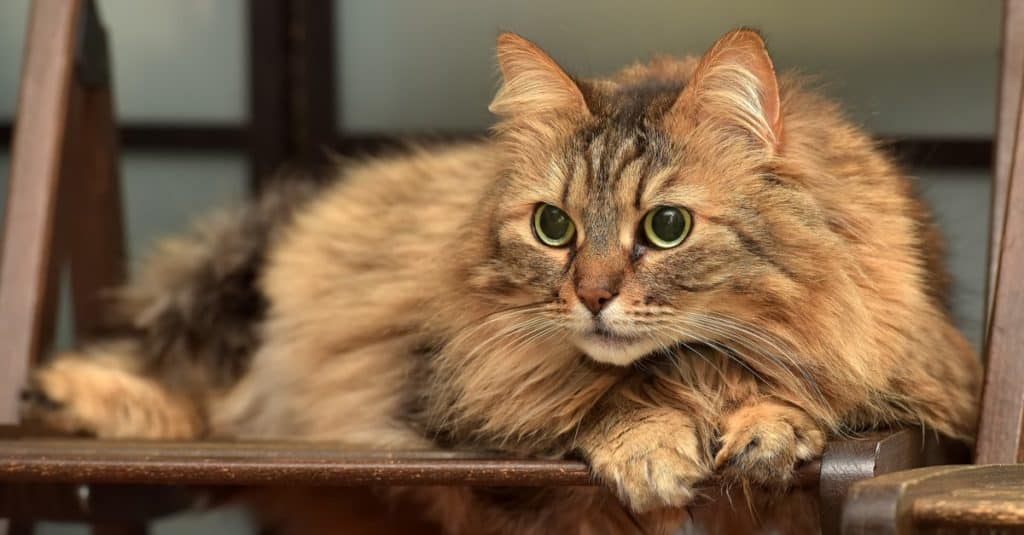
Black tabby marks fade as the amber Norwegian Forest cat gets older.
©Anna Krivitskaya/Shutterstock.com
Perhaps the most unique and rarest of possible tabby cat colors is exhibited by only one breed worldwide. So far, the amber color appears only in Norwegian Forest cats. Due to a mutation that replaces the black pigment with yellow pigment as the cat matures, amber color offers a strange case within cat genetics. Therefore, amber tabby cats are born with the typical black tabby markings, which change into a rich amber color by adulthood.
2. Cinnamon
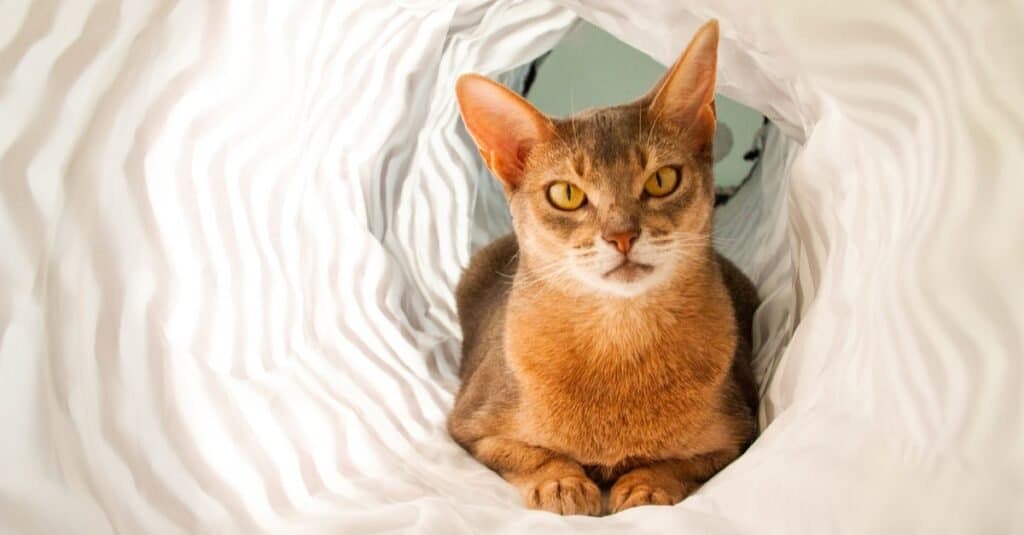
Abyssinian
cats commonly come in a cinnamon color, featuring the ticked tabby markings.
©Smartha/Shutterstock.com
Cinnamon tabby cats appear often in the Abyssinian breed. This cat breed is characterized by its unique ticked tabby pattern, which appears as the typical tabby markings on the face with agouti tabby markings throughout the body. Tabby cats with the cinnamon ticked pattern have a copper-red coat ticked with chocolate brown. The cinnamon tabby cat color is rarer due to its link to a recessive gene. A cat must have two copies of the b1 recessive allele to feature a cinnamon coat.
3. Chocolate
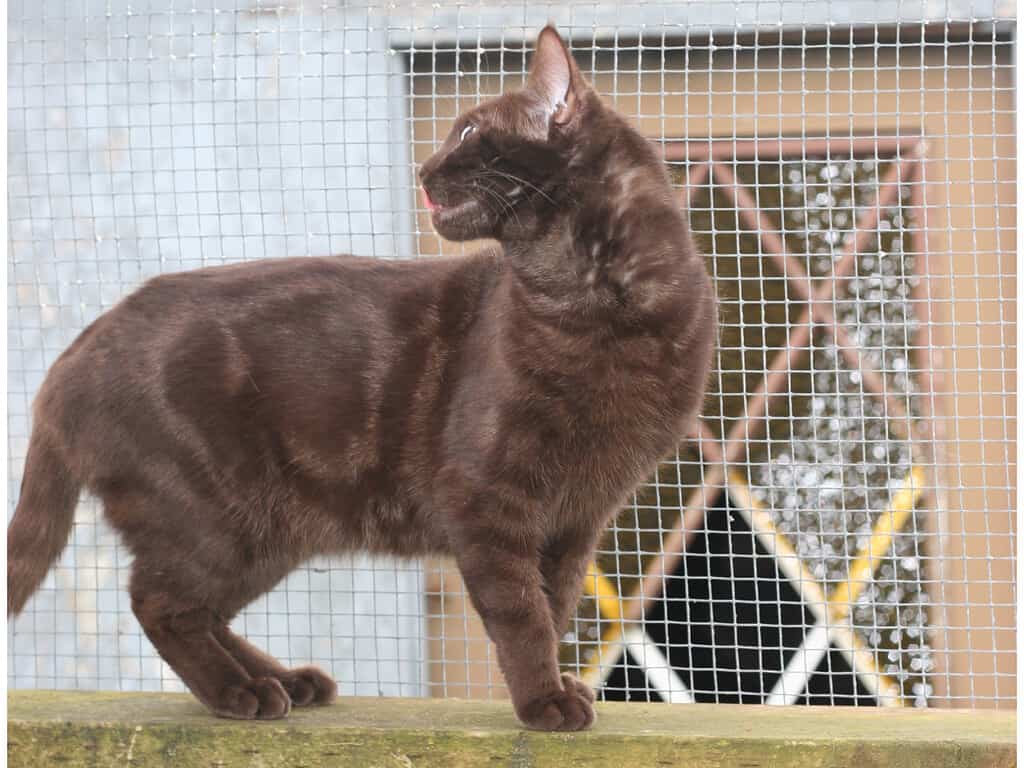
The genes that code for cinnamon cat color also code for brown. Other genes decide the richness and intensity of brown, sometimes making a beautiful, smooth “chocolate” coat color. Chocolate tabbies are not the typical cat you find at your local shelter. The chocolate tabby color also has a lightened version known as lilac, which features a muted brown tone. In cat genetics, the brown color results from a different allele on the same gene that codes for black color. Therefore, if a cat has two copies of the recessive brown allele, they will be brown (chocolate in the cat world).
4. Silver

Silver tabbies have light-grey coats with darker tabby markings.
©DK13/Shutterstock.com
A stark contrast between the light coat and the dark stripes characterizes most silver tabbies. The silver tabby color depends on a dominant inhibitor gene, which, when present in one parent, will impact the offspring’s yellow pigment. Kittens with at least one parent with this inhibitor gene do not have yellow pigment in their coat, creating a cold silver look.
5. Cream
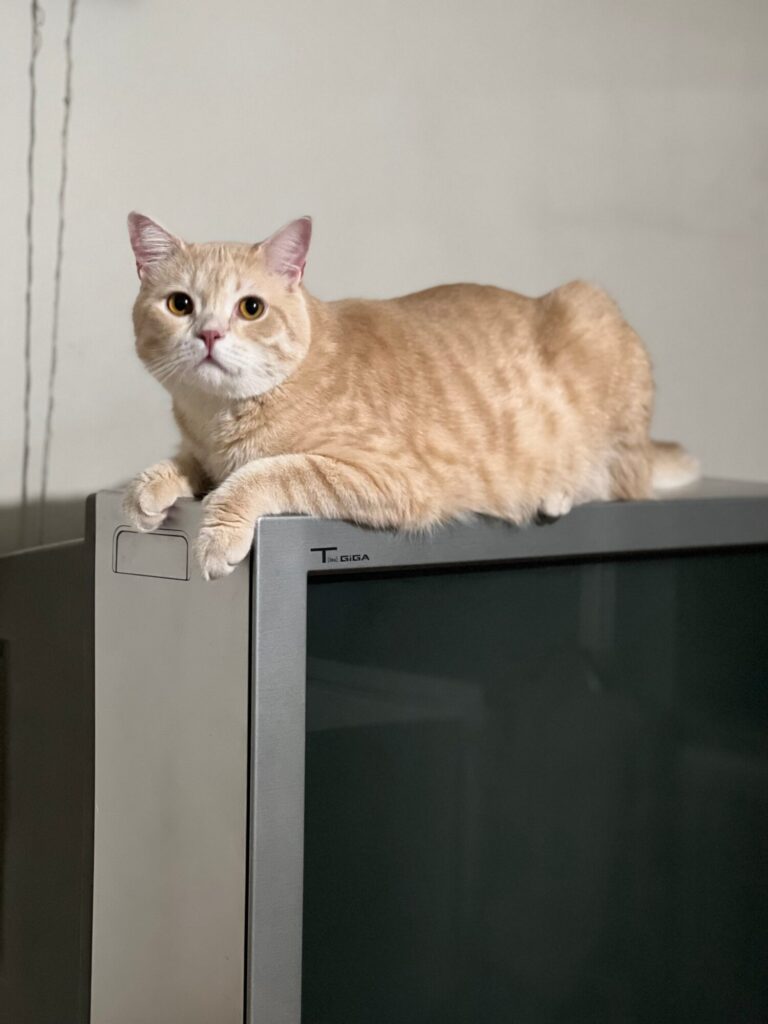
A cream tabby is essentially a pale orange tabby. The cream tabby color has a pale, milky look.
©fon_ti/Shutterstock.com
When you first see a cream tabby cat, you might think it looks like someone wrung out the red pigment in an orange tabby cat. The pale look of the cream tabby cat color happens due to the dilution of the orange gene. Two copies of the recessive dilute gene in a cat will result in this milky color. Cream-colored tabbies do not appear as often as bolder-hued orange tabbies, but they will always be tabbies. The gene that creates the orange and cream colors does not allow for the non-agouti (solid) expression.
6. Patched
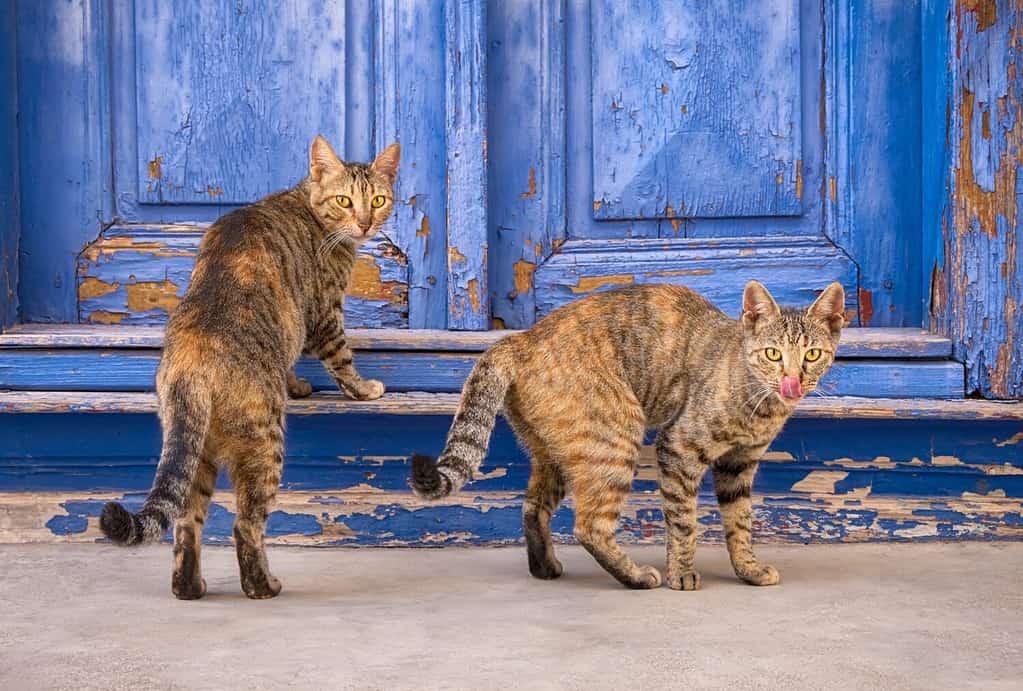
Patched tabbies are an interesting variation on the tortoiseshell coat color.
©Katho Menden/Shutterstock.com
Sometimes called “torbies,” patched tabbies are rare among male cats. This tabby color gets its name from the orange and black “patches” in the coat, along with one of the four tabby patterns. Like non-tabby tortoiseshell cats, patched tabbies typically cannot be male due to the gene for the colors residing on the X chromosomes. Cats require genes on two X chromosomes to exhibit both black and orange colors. In rare occasions, male patched tabbies arise due to an anomaly that gives a male an extra X chromosome.
7. Calico

Like torbies, the colors orange and black that make up a calico tabby’s color reside on the X chromosomes.
©krblokhin/iStock via Getty Images
Both calico tabbies and non-tabby calicos appear frequently in domestic cats. Calico markings appear randomly due to the inactivation of the genes that make black and orange fur. However, you might not notice the tabby markings immediately depending on the mixture of orange, black, and white on the cat. Except when it comes to males and females, the calico tabby color is not very rare. Like torbies, the colors orange and black that make up a calico tabby’s color reside on the X chromosomes. Male calico tabbies are very rare, and when they appear, they are often sterile.
8. Orange/Red

Red or orange tabby cats are often male and can have elements of white in their coat, too.
©Hisashi from Japan / CC BY-SA 2.0 – License
The tabby color that many people think about first is the orange tabby, like the famous cartoon Garfield. An orange tabby can be all orange or have elements of white. The orange tabby cat color can also pair itself with the mackerel tabby pattern, giving the cat a striped appearance not unlike a tiger. However, all orange cats are tabbies due to genetics. The gene for red color cancels out the non-agouti gene, making a solid color impossible.
9. Gray
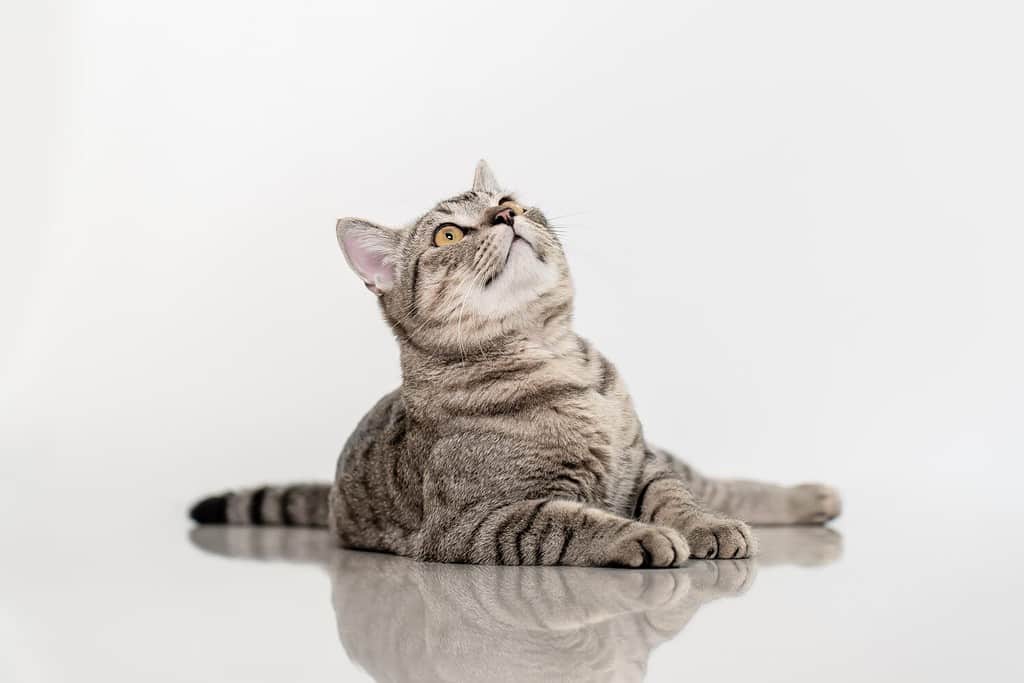
The grey tabby color appears often in different breeds around the world.
©Nichcha/Shutterstock.com
Gray tabbies typically have a shade of gray as the base color with some form of black tabby markings over the body. The gray tabby color appears frequently in the cat world, in variations ranging from light to dark gray. This cat color has been found to be genetically a diluted form of the black coat. Dilution means that the color is washed out a little with another gene. Among cat aficionados, gray cats are often called blue.
10. Brown
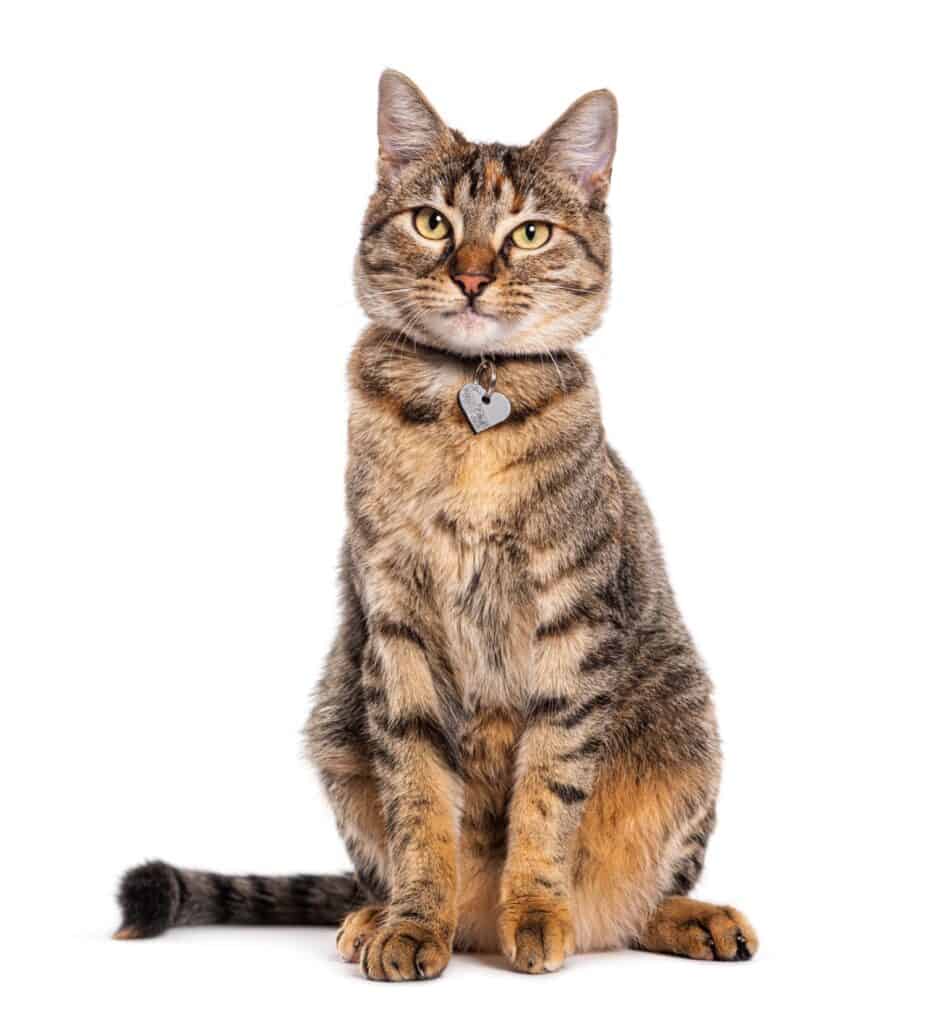
Brown tabby cats might make up the most significant portion of tabby cats in the world.
©Eric Isselee/Shutterstock.com
A basic brown tabby cat might be the closest thing to what our beloved pet’s ancestors might have looked like. All domestic cats are descended from a wild ancestor with a mackerel tabby pattern, perhaps most similar to the brown tabby color in many domestic cats today. Of course, the brown tabby coat color can vary between classic, mackerel, spotted, and ticked patterns, as well as unique variations of stripes or the addition of white.
Summary of the Rarest to Most Common Tabby Cat Colors
| Rank | Tabby Colors | Rarity |
|---|---|---|
| 1 | Amber | Most Rare |
| 2 | Cinnamon | Rare |
| 3 | Chocolate | Rare |
| 4 | Silver | Fairly Rare |
| 5 | Cream | Fairly Rare |
| 6 | Patched | Fairly Common |
| 7 | Calico | Fairly Common |
| 8 | Orange/Red | Common |
| 9 | Gray | Common |
| 10 | Brown | Most Common |
The photo featured at the top of this post is © Anna Krivitskaya/Shutterstock.com
Thank you for reading! Have some feedback for us? Contact the AZ Animals editorial team.






